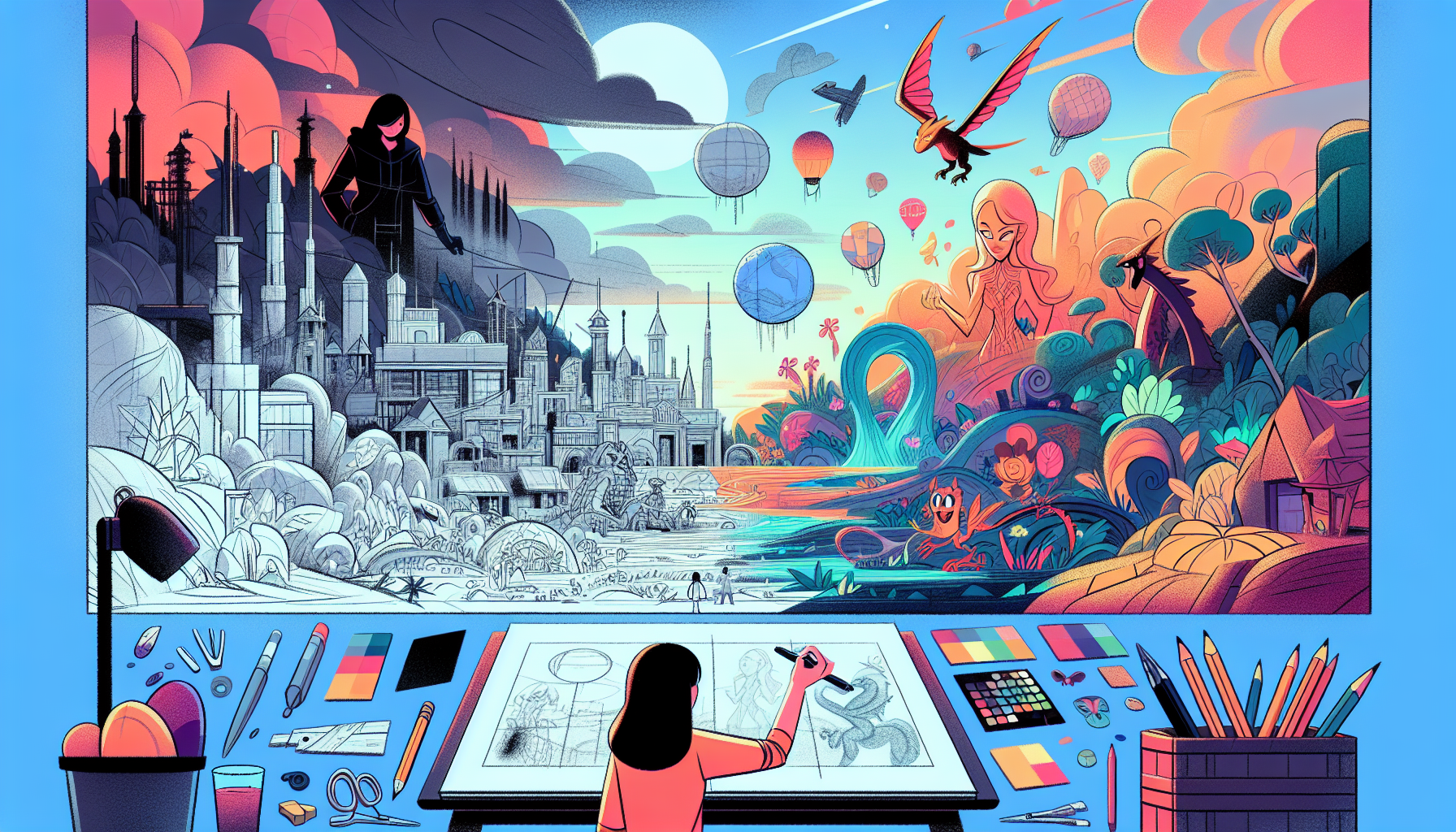- Home
- Screenwriting
- Crafting Worlds: The Importance of World-Building in Animated Movies

Introduction to World-Building in Animation
In the realm of animated movies, the creation and development of unique worlds go beyond mere backdrops for storytelling. World-building is the meticulous process of fashioning the environment where the narrative unfolds, including its rules, cultures, history, and physical laws, contributing to a movie’s narrative depth, character development, and audience immersion. This article explores the significance of world-building in animated films, examining its impact on storytelling, character engagement, and the viewer’s experience.
The Role of World-Building in Storytelling
At its core, world-building serves as the foundation for storytelling in animated movies. A well-constructed world provides a context that enriches the plot and adds layers to the narrative. It allows filmmakers to craft intricate stories that resonate with audiences by offering a believable, yet fantastical, space where characters live, interact, and evolve. A vividly imagined world can also introduce unique conflicts and challenges, driving the story forward and offering avenues for complex character development.
Enriching Plot and Theme
Moreover, the environment and its societal rules can mirror real-world issues, presenting themes of conflict, resilience, and hope. Animated movies like Zootopia cleverly use their world’s structure to explore themes of prejudice and unity, turning the setting itself into a character that impacts the narrative.
Creating Emotional Depth
By meticulously designing the world’s aesthetics and lore, animators can evoke specific emotions and affect how audiences perceive the story. The apocalyptic world of WALL-E not only sets the stage for an epic love tale but also serves as a commentary on consumerism and environmental neglect, making the audience reflect on the real world.
Engagement and Immersion
World-building in animated movies plays a critical role in engaging and immersing viewers in the story. A detailed and cohesive world can captivate audiences, inviting them to explore and wonder about the intricacies of the universe the characters inhabit. It’s this depth and attention to detail that transform viewers into active participants, eager to suspend their disbelief and fully immerse themselves in the narrative adventure.
Sense of Wonder and Exploration
Animation offers a unique opportunity to bring unparalleled creativity to world-building. Movies like Avatar: The Last Airbender and Coco transport audiences to places they can only dream of, filled with rich cultures, extraordinary landscapes, and uncommon societal norms. This sense of exploration and discovery is pivotal in keeping audiences engaged and connected to the narrative.
Impact on Viewer Experience
Ultimately, the significance of world-building in animated movies extends to shaping the viewer’s overall experience. A well-constructed world can inspire awe, foster emotional connections, and even influence audience interpretations and discussions long after the movie ends. It’s the difference between watching a movie and living within it for a brief moment in time.
Cultivating Fandom and Legacy
The depth of the world-building often determines the longevity of a film’s relevance and its ability to cultivate a lasting fandom. Worlds with rich backstories, lore, and uniquely crafted environments invite audiences to delve deeper, encouraging fan theories, artworks, and discussions that extend the life of the film beyond its runtime. Such engagement not only cements the movie’s legacy but also contributes to the development of sequels, merchandise, and expanded universe content.
World-building in animated movies is a crucial aspect that enriches storytelling, enhances character development, and deepens audience engagement and immersion. By crafting detailed, coherent, and emotionally resonant worlds, animators invite viewers into an experience that transcends the ordinary, offering them a glimpse into the limitless possibilities of imagination and creativity.






